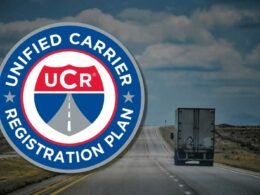The global pandemic exposed many vulnerabilities in supply chains. Resilient companies could adapt and optimize their operations; those that couldn’t frequently did not recover. Carriers keep products moving, but business owners must oversee these supply chain elements to achieve optimal results.
Companies need to implement best practices in carrier management. Doing so allows them to optimize their supply chains. The process must begin when a company needs to find a logistics company. Starting this process early ensures processes are streamlined, efficiency is maximized, and the business owner experiences less stress.
Efficiency
Business owners must find carriers that align with their business objectives. They need to deliver goods on time, handle cargo capably, and use technology to optimize deliveries. The American Trucking Association predicts a significant driver shortage in the years to come. This organization anticipates a shortfall of 160,000 drivers by 2030. When a business owner has an established relationship with a reputable carrier, they won’t need to worry about this shortage as much.
Key Performance Indicators
When comparing carriers, business owners must know which key performance indicators to focus on. For example, one company might be concerned about invoice accuracy, while another is more concerned with the precision of upfront pricing. Intangible factors should not be overlooked, however. The business owner should consider communication quality and responsiveness when problems arise. Technology can help a business owner determine which carriers to consider and which cannot meet their needs. Many business owners utilize a transportation management system to collect and analyze data related to planning, fleet management, and other key factors.
Risk Management
Business owners cannot eliminate all risks, but they must manage those that are known to them. They need to plan for various scenarios and utilize real-time data to identify problems promptly, enabling them to respond effectively. Contingency plans are essential. Marsh McLennan, a professional services firm, conducted a study that found there is a gap between risk awareness and preparedness. Business owners are often aware of risks, but they don’t actively evaluate or model the impact of these threats on their operations. This needs to change.
Communication and Feedback
Business owners must have open lines of communication with their carriers. Without this communication, the partnership will not be successful. The business owner must identify the carrier’s strengths and weaknesses and share this information through constructive feedback. Without this feedback, the carrier cannot close the gaps. Concerns should always be freely discussed to improve both parties, where needed. Business owners benefit from having fewer partners because they can focus on strengthening these relationships and increasing overall efficiency. Furthermore, the business owner must ensure they choose carriers that can meet their specific needs. To do so, they may need to diversify the carrier pool.
Strong Relationships
Strong relationships are the backbone of any successful partnership. Both parties must demonstrate the value of the partnership. For instance, a carrier that regularly meets or exceeds the key performance indicators should be rewarded with more business. A client who is flexible and can work with the carrier to make changes as needed is appreciated. Supply chains are continually evolving, and both parties must collaborate to address any challenges that arise from this evolution. When they do, both parties can thrive.
Effective carrier management is crucial to ensure that supply chains operate smoothly. Carriers must adopt new technology to meet the evolving demands of clients, and clients must remain adaptable and open to new approaches to optimize their supply chains. Strong relationships enable parties to communicate effectively and find optimal solutions for all, ensuring that supply chains operate smoothly and efficiently, ultimately benefiting everyone.










